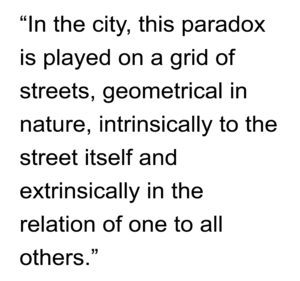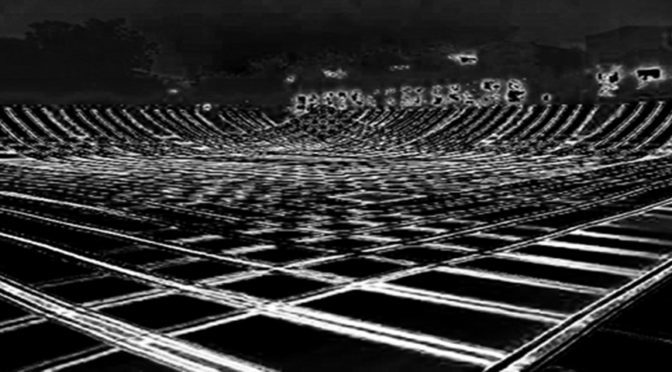On Space | A Sensory City of Theory
by Dr. Mark David Major, AICP, CNU-A
Building transmutes the ideal into the selectively practical. Architecture asserts the hypothetical into creative sensation – of space, of light, of form, of transformation, of shapes frozen and in motion – and the city is born. The architect and planner re-assert the sensory into the theoretical, and the organism of the city is invigorated and renewed. The genesis of this association lies in the imagination of human intellect and the practicality of the human hand. It is not a mysterious alchemy, revealed to only a privileged few. It is a delightful synthesis of the human condition in which we are all are invited to participate. Space is both the medium and crucible of this association. Space surrounds and embeds the condition with meaning – within and extraneous – simultaneously internal and external to the object whilst also being native and foreign to its subject. It is future prologue and past epilogue of the same problem. In the city, this paradox is played on a grid of streets, geometrical in nature, intrinsically to the street itself and extrinsically in the relation of one to all others. This nature exists in a continuum, an axis drawn between the extremes of conserved chaos and radical order. Our errors in comprehending this ordered chaos, what Jane Jacobs once referred to as “organized complexity”, lies within the self-imposed boundaries of our own descriptions. We become limited in describing that which we wish to see instead of observing that which we wish to understand and, in doing so, we become trapped within the tired dogmas of an imagined past and a condemned future.
of observing that which we wish to understand and, in doing so, we become trapped within the tired dogmas of an imagined past and a condemned future.
Dogma selects us. We do not choose the doctrine. This often (preferably) occurs independently of curiosity or wisdom and we youthfully mistake its favors as a proclamation that, indeed, we are the anointed one. It is a false image of oneself. Once a single step is taken along this path, we derive words inadequate to the object but sufficient for dogmatic pursuit in a hollow attempt to describe the nature of the city and make the understandable, the objective, into the incomprehensible, the subjective. We move backward and abnegate the hypothetical for the fanciful, the sensory for the material, and theoretical for the dogmatic. In doing so, we attempt to surround ourselves in meaning at the expense of the spatial and the urban. Theory suffocates in the vacuüm of this confrontation, embracing a void that fails the essential, instinctive construction of the city, in service to the super-ego of the individual. The urban loses balance. The real nature of the city hides behind a mask, a voice without a face, raising objections to the elementary urbane on shallow grounds of methodological peculiarities, historical reinterpretations, and narrow understandings of the relation between form and function. We must not fear to finally unmask the charlatan to unveil the bodily and mentally sensual to the masses, and declare the sensory city as a subject that is worthy of investigation and a thing demanding objective theory. In this way, the investigative and the theoretical form a synthesis to reveal the functional significance of space. Our words must have the precision and structure of whispers so that our theories carry meaning beyond the lone voice screaming to be heard above the crowd. We are the crowd, and it is our voices that matter.
On Space is a regular series of philosophical posts from The Outlaw Urbanist. These short articles (usually about 500 words) are in draft form so ideas, suggestions, thoughts and constructive criticism are welcome.

